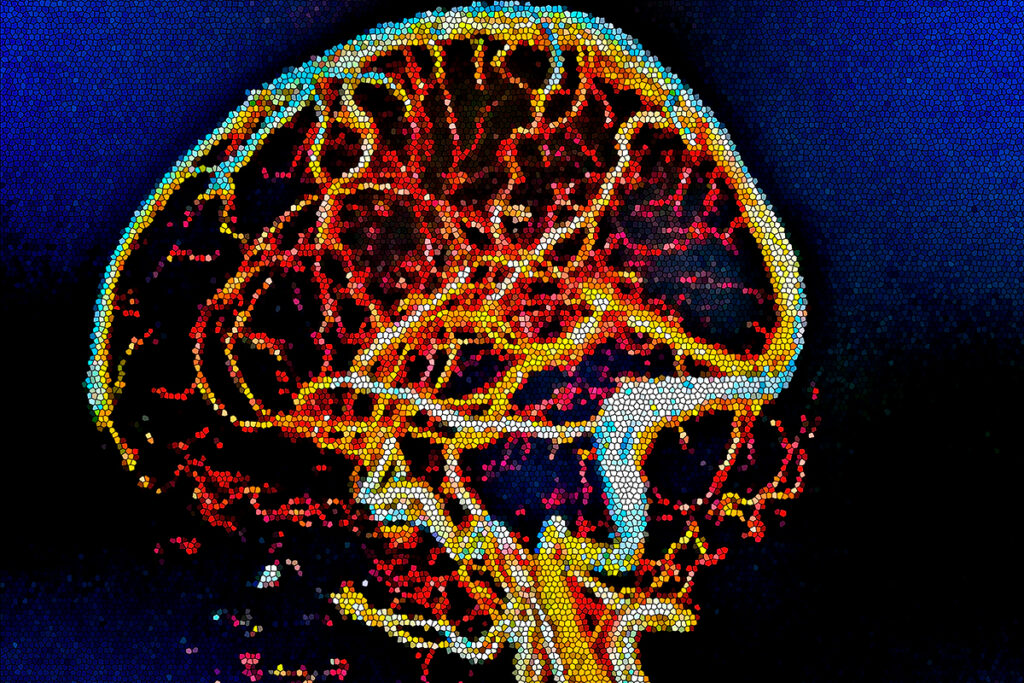Interferons (IFN) are signaling molecules that trigger the body’s antiviral defenses. Interferons properties of the immune, endocrine, and central (CNS) and peripheral (PNS) nervous system. Interferons are produced when receptors develop on the cell surface where foreign molecules meet to cause a viral or bacterial attack or tissue inflammation.
Viral infections are often associated with acute pain, as pain receptors (nociceptors) – express recognition receptors on their surface that can sense the presence of viruses. One example is the pain associated with the reactivation of the herpes simplex virus.
Interferons bind to interferon receptors to implement the antiviral response: type I IFN – with IFNAR receptors, type II IFN – with IFNGR receptors. IFNAR is expressed in most cells, including immune cells, neurons, and spinal cord glia.
Different types of interferons affect the pain sensation that nociceptors transmit to the brain.
Interferon-Gamma Enhances Pain Sensitivity
Interferon-gamma – IFN type II, the production of which increases significantly in infectious and neuroinflammatory diseases. IFN-gamma has pro-inflammatory properties and suppresses virus replication. IFN-gamma signal transmission is short-lived, which is essential for tissue repair. IFN-gamma is secreted by glial cells, neurons, and infiltrating monocytes and stimulates neuroinflammation and neuroprotective processes such as neurogenesis and brain repair.
IFN-gamma has pronociceptive properties – increases pain sensitivity:
- In experiments on rats, the introduction of IFN-gamma into the spinal canal reduced the pain threshold. The introduction of IFN-gamma into the spinal cord caused persistent pain behavior in rodents and enhanced spinal nociceptive reflexes.
- Activation of IFN-gamma was observed in the lumbar spinal cord after nerve damage.
- Local activation of IFN-gamma in the pulposus nucleus in the herniated disc was associated with acute lumbar radicular pain.
- Removal of the IFNGR receptor led to a decrease in tactile pain hypersensitivity in mice after nerve damage.
IFN-gamma receptors are responsible for neuropathic pain when a nerve is damaged. Spinal cord glia is involved in pain hypersensitivity, activated when a nerve is damaged. Cerebrospinal glia expresses interferon-gamma–IFNGR receptors. Stimulation of IFNGR receptors activates glia and causes prolonged pain hypersensitivity in response to such harmless stimuli as touching. Removal of IFNGR receptors disrupts glial activation caused by nerve damage and eliminates pain hypersensitivity without affecting normal pain sensitivity.
Interferons-Alpha and -Beta Suppress Pain Sensitivity
Interferon-Alpha
Interferon-alpha – a type I IFN, which suppresses viral infections and has antitumor activity. Unlike IFN-gamma, IFN-alpha suppresses pain sensitivity. In one study, scientists induced an immune response in rats by injecting miRNA into the spinal canal and then stimulated inflammation by injecting an antigen solution – a complete Freund adjuvant. After injection of miRNA in rats, IFN-alpha was activated in the spinal cord, which reduced inflammatory pain. The introduction of IFN-alpha into the spinal canal also suppressed pain hypersensitivity in rats with inflammation, and in ordinary rats caused an analgesic effect and slowed the reflex of pulling back the hind paw from the pain stimulus. At the same time, the antinociceptive effect of miRNA and IFN-alpha was blocked when rats were injected with antibodies to IFN-alpha or the drug naloxone, which suppresses the action of opioids.
One of the reasons for the antinociceptive effect of IFN-alpha is that leukocyte interferon can bind to an opioid receptor that suppresses pain. IFN-alpha blocks nociceptive pain and slows down reflex reactions to physical stimuli when injected into the brain. The opioid receptor antagonist naloxone eliminates these effects. In addition, IFN-alpha has similar pharmacological properties to the opioid peptide β-endorphin.
In the spinal cord, IFN-alpha and its IFNAR receptor are expressed in glial cells and neurons and regulate pain sensitivity dependent on IFN-alpha. Type I IFN can quickly suppress the excitability of mouse, monkey, and human nociceptors. Introducing a neutralizing antibody to IFN-alpha or IFN-beta into the spinal cord increases pain sensitivity in rats and mice.
Interferon-Beta
Interferon-beta is a type I IFN used to treat multiple sclerosis. IFN-beta has an analgesic effect. In a mouse model of arthritis, IFN-beta injection into the spinal cord caused short-term pain relief. However, the combined administration of IFN-beta and antibodies against TNF-α led to pain relief for several weeks. This long-term pain relief can be explained by the fact that IFN-beta triggered the expression of IL-10 in the spinal cord.
Another study in mice showed that a single injection of IFN-beta into the spinal cord could relieve pain hypersensitivity caused by nerve damage for several days without affecting motor activity or eating behavior.
How to Use Type I Interferons
Type I interferons treat various viral infections, including hepatitis C and hepatitis B and oncological diseases. In addition, type I interferons can be used as anti-inflammatory mediators since IFN-I stimulates the production of anti-inflammatory cytokines (IL-10) and other immunosuppressive molecules and blocks the expression of pro-inflammatory mediators.
However, against the background of acute viral infections, type I interferons can cause immunopathology, contributing to autoimmune diseases such as systemic lupus erythematosus, Aicardi-Gutierrez rheumatoid arthritis, systemic sclerosis, and Sjogren’s syndrome. In addition, prolonged viral infections can lead to high concentrations of type I interferons, which can inhibit the activity of B cells or lead to the production of immunosuppressive molecules (for example, IL-10). Also, prolonged exposure to IFN-I causes depression, anxiety, cognitive impairment, and even delirium.
Pronociceptive Effect of Type I Interferons
Type I interferons have different effects on pain sensitivity, depending on the method of administration. The introduction of IFN-I into the central nervous system suppresses nociceptive pain, but local administration of IFN-I increases pain sensitivity.
The introduction of IFN-alpha or IFN-beta into the sole increased pain from mechanical stimuli in mice. Increased pain sensitivity persisted for several days. Interestingly, IFN-alpha injected into the spinal cord suppressed mechanical hypersensitivity caused by high doses of IFN-alpha injected topically.
High doses of type I IFN can contribute to the production of autoantibodies. Thus, antibodies to IFN-beta appear in 3-45% of patients with multiple sclerosis who receive IFN-beta for treatment, especially for patients receiving the subcutaneous form of IFN-beta. Autoantibodies and corresponding antigens can form the IgG-IC complex, which can directly bind to the FcyR receptor on the surface of neurons, activating nociceptors and causing pain.
Conclusion
Interferons are signaling molecules that cells produce to fight infection. IFNs are involved in pain syndrome and can suppress pain and increase it. The antinociceptive and pronociceptive effects of interferons depend on the type of IFN, the method of administration and dose, and the presence of the disease and its phase. In the spinal cord, IFN-gamma increases pain, while IFN-alpha and IFN-beta suppress pain sensitivity.
IFN-alpha and IFN-beta are used to treat infectious diseases, cancer, and multiple sclerosis. However, a constant high level of IFN contributes to chronic neuroinflammation associated with aging, cognitive decline, and neurological disorders.
Understanding how interferons affect pain sensitivity and how they act in physiological and pathological conditions will improve pain treatment methods after operations, injuries, and infections.
Useful article, necessary information? Share it!
Someone will also find it useful and necessary:
Reference
Interferons in Pain and Infections: Emerging Roles in Neuro-Immune and Neuro-Glial Interactions



